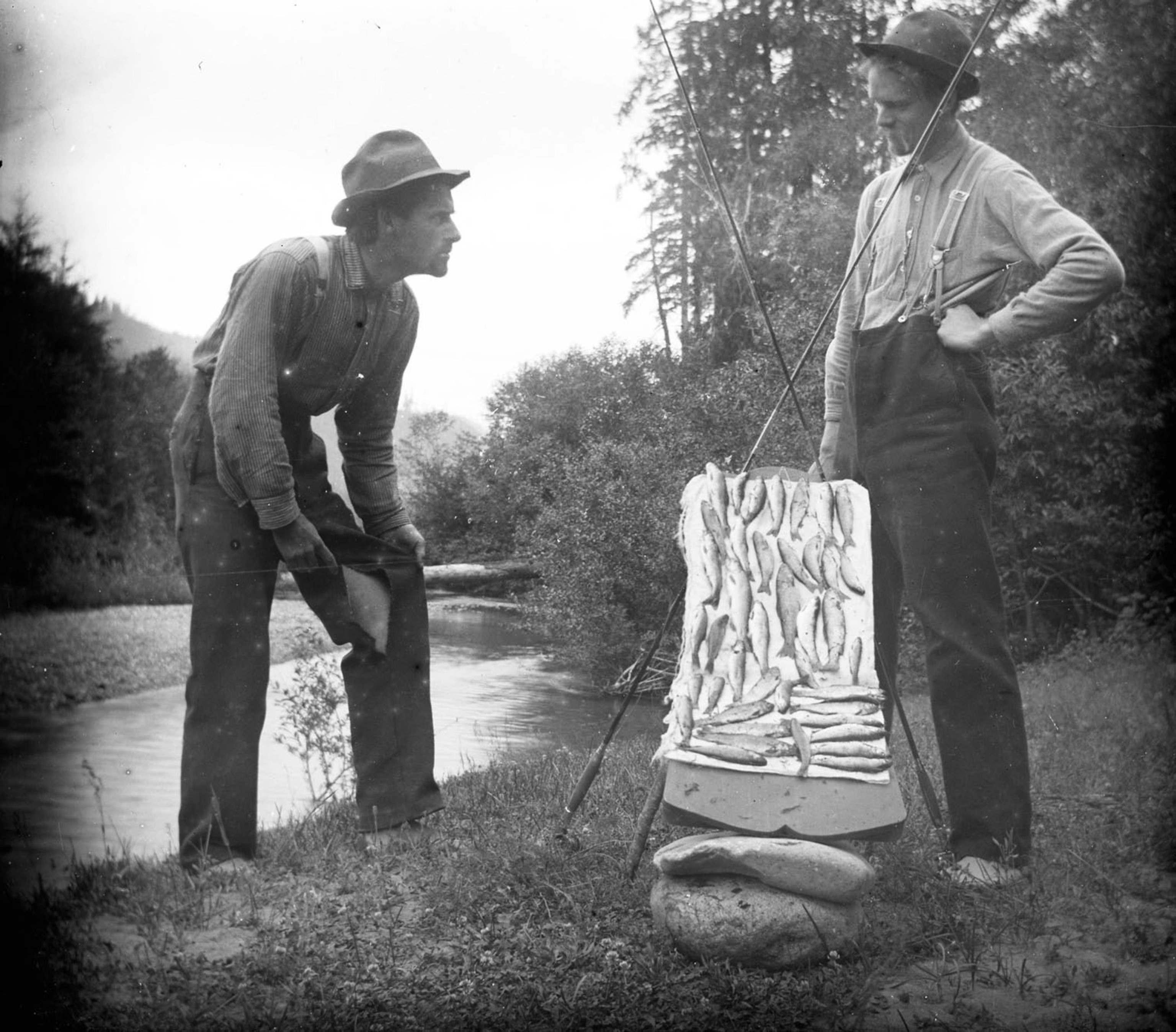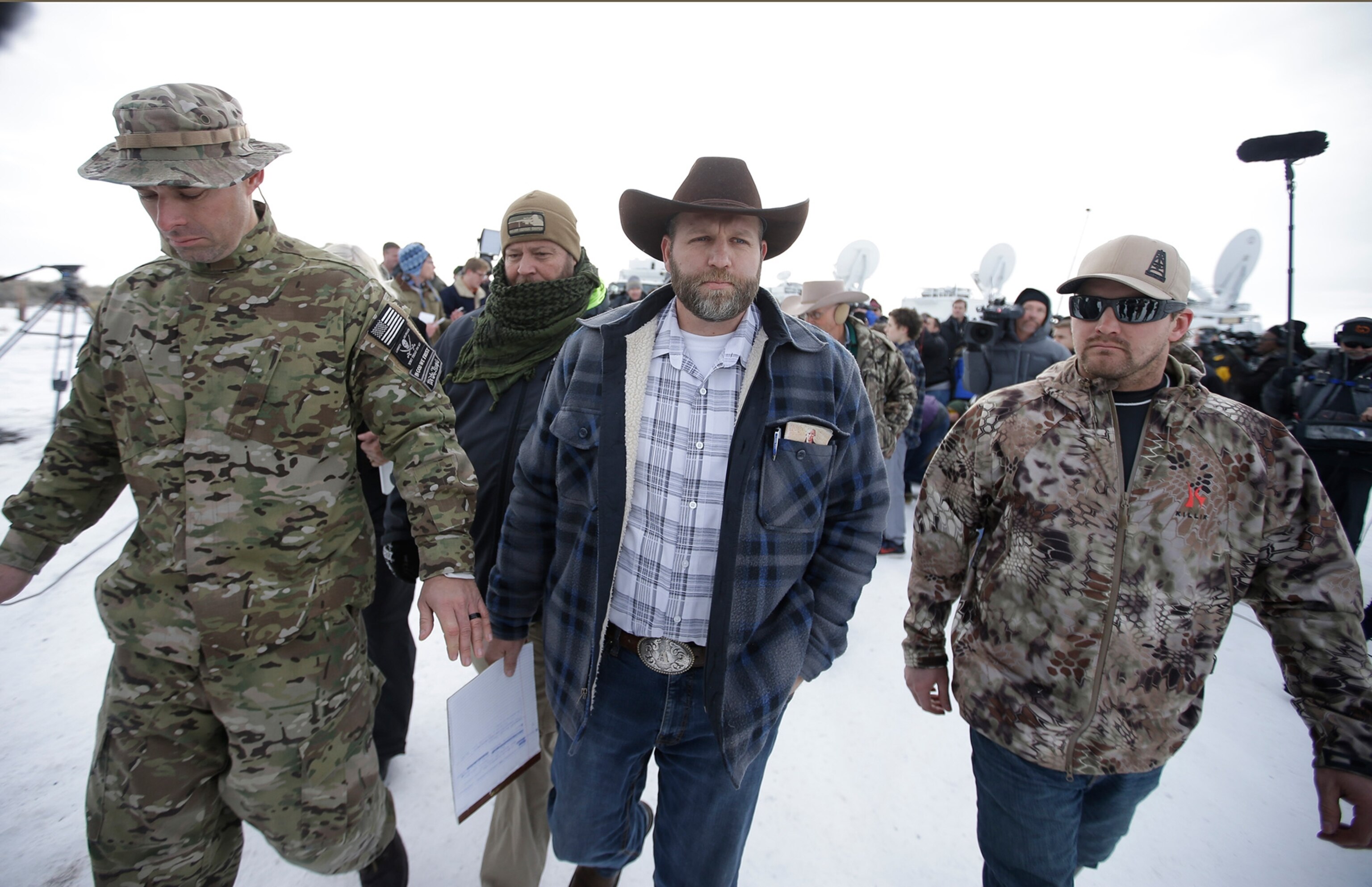
A Brief History of Western Ranchers Fighting Uncle Sam
The federal government, ranchers, and Native Americans have all clashed over western lands, in Oregon and beyond.
The continued occupation of a wildlife refuge by about 20 armed protesters in Oregon is the latest flare-up of long-standing tensions in the Western United States. The protesters have occupied the headquarters of the 187,757-acre Malheur National Wildlife Refuge since Saturday, part of an effort that reflects some ranchers’ and loggers’ frustration at federal controls that apply to most of the land in the American West, including nearly half of Oregon.
Many ranchers in the West are not fans of the protesters’ methods, but the conflict at the root of the occupation has been simmering for decades. The debate pits the government’s interest in preserving lands and protecting various species of animals against ranchers, loggers and others who see federal policies as overly intrusive and a hindrance on western residents’ efforts to make a living.
A History of Conflict
The split between western ranchers and federal land managers isn’t unique to Oregon. As the Washington Post’s Niraj Chokshi wrote on Monday:
The West is uniquely affected by federal control of public lands. The region is home to nearly 93 percent of all federal land, according to 2010 data compiled by the Congressional Research Service. Just over half (52 percent) of all the land within the nation’s 13 Western states is under federal control.
In Nevada, over 80 percent of the land within the state’s borders belongs to the federal government. Utah ranks second, controlling only one-third of the land within its borders. Alaska and Idaho control about three-fifths of the land within their borders, while Oregon ranks fifth, with 47 percent of its land under state control.
And the Malheur incident is hardly the first time that residents of western states have organized against federal land control. In 1979, the state of Nevada tried to sue the U.S. Bureau of Land Management over control of its lands, starting the “Sagebrush Rebellion,” a loose political movement among western states fighting for control of federal lands.
Philip Bump of The Washington Post points out that Republican President Ronald Reagan, who supported the movement against the federal government prior to his 1980 election, ultimately dismantled the Sagebrush Rebellion by directing his Department of the Interior to maintain more flexible contact with state and local authorities.
The actions of Reagan and his secretary of the interior James Watt effectively dissipated the Sagebrush Rebellion in name, but did little to dissuade western states’ interest in controlling federal lands. Nigel Duara of the Los Angeles Times explained back in May that states’ recent efforts—such as Utah’s establishment in June of a $2 million commission to brainstorm strategies to transfer federal land to state control—have been politically coordinated in large part by a Utah-based group called the American Lands Council.
The group, funded largely by rural county commissions and entities led by libertarian billionaires Charles and David Koch, argues that the federal government has reneged on so-called “enabling acts” baked into the legislation that originally crafted the western states. The group claims the legislation calls for the devolution of federal land control. Scholars interviewed by Duara, however, note that the Council’s legal arguments are “doomed to failure”—and that states may well lose money on any putative takeover, given land maintenance costs and volatile natural resource prices.
In a Facebook post on Sunday, the American Lands Council decried the “modern day Shays Rebellion” (sic) in Oregon as “NOT the way to solve this issue of federal Abuse,” though it suggested Tuesday afternoon that “there will continue to be discord, dissonance and frustration” if current federal policy persists.
Teddy Roosevelt’s Legacy
But as the saying goes: Old habits die hard. As National Geographic’s Brian Clark Howard pointed out on Monday, Malheur National Wildlife Refuge—a crucial waterfowl habitat—has been under federal control for more than a century, the nineteenth of 51 such refuges designated by President Theodore Roosevelt during his time as president (1901-1909). Roosevelt wouldn’t have acted on Malheur, though, were it not for William Finley, a wildlife photographer who once wrote for National Geographic.
Finley, along with fellow photographer Herman Bohlman, documented the area’s birds in early 1908, after decades of hunting—fueled by the demand for hat plumes—had decimated bird populations. As Finley later wrote for The Atlantic Monthly:

After hunting for seven days we returned to camp for more provisions, and set out to visit another part of the lake. This time we stayed out for nine days, and saw—two white herons! At the time we thought these must be part of a group that nested somewhere about the lake; yet more likely they were a single stray bird that came our way twice. I am satisfied that of the thousands of white herons formerly nesting on Malheur, not a single pair of birds is left.
Outraged by the devastation they had witnessed, Finley and Bohlman teamed up with the Oregon Audubon Society to lobby for a wildlife refuge encompassing Lake Malheur and two surrounding lakes. On August 18, 1908, Roosevelt signed the executive order that created the “Lake Malheur Reservation.”
By the time his presidency ended in 1909, Roosevelt—a bold conservationist—had set aside about 230 million acres of land across the nation for public enjoyment. His actions and those of his fellow presidents gave the National Parks System to the U.S. public, a theme that National Geographic magazine is exploring throughout 2016.
Malheur’s First Residents
But Roosevelt wasn’t the first president to designate the Lake Malheur area as a federally protected reservation. In fact, there’s a certain irony to the occupiers’ claims of taking ownership of the land, given that the federal land comprising Malheur National Wildlife Refuge was once held in trust to the indigenous Northern Paiute Indians.
On September 12, 1872, President Ulysses S. Grant issued an executive order creating the “Malheur Reservation,” in an effort to strike a balance between eager white settlers and the Paiute, who had been struggling to secure sufficient food and resources. However, the reservation, which totaled over 1.7 million acres, was not to last. By 1877, Grant had ceded tracts on Lake Malheur’s northern shore to white settlers, despite complaints from the Paiute. And armed conflict in 1878 between Paiute warriors and the U.S. Army hastened Oregon politicians’ cries for dissolution of the reservation, which happened the following year.
Many of the people living in Malheur Reservation were taken from their homes, forcibly transported to central Washington’s Yakama Reservation or central Oregon’s Warm Springs Reservations—a horror for the Paiute not unlike the Trail of Tears in the 1830s, when thousands of Cherokee were forced from their lands east of the Mississippi.
Indian Country Today’s Steve Russell points out that the present-day Paiute reservation in Burns, Oregon, is—at about 760 acres—a fraction of its former size. And at a press conference early Wednesday, Charlotte Rodrique—the tribal chair for the Burns Paiute—accused the occupiers of “desecrating one of our sacred sites.”
More Than Politics?
Ranchers’ frustrations over federal policy is rooted in economics, but in some cases it also is layered with religion and the sense of independence for which residents of the West have long been known. BuzzFeed’s Jim Dalrymple II argues that Ammon Bundy, the leader of the Malheur occupation, and his supporters are riffing off of anti-government themes “deeply colored by Mormon history,” a reflection of what some view as the federal government’s persecution of the Church of Jesus Christ of Latter-Day Saints.
After Joseph Smith founded Mormonism in 1830 in upstate New York, the upstart religion “quickly ran into hostility,” Dalrymple says, because of political tension, theological disputes, and eventual outrage over the practice of polygamy. The conflict eventually drove Mormons west into Missouri, where they encountered a decade of skirmishes with the state militia—and an “extermination order” issued by Missouri’s governor.
Later federal action against Utah’s Mormons in the 1850s further engendered a lingering persecution complex among some Mormons, a stance strengthened by the “sinful governments” and “righteous resisters” depicted in the stories of the Book of Mormon.
When Oregon Public Broadcasting’s Amanda Peacher spoke with one of the occupiers, he gave his name as “Captain Moroni,” taking the name of a righteous general in Mormon tradition who threatened to “stir up insurrections” against a government indifferent to its people.
But FiveThirtyEight writer Leah Libresco finds that federal control of grazing lands—which the Bundys and Hammonds find insufferably encumbering—actually seems to be giving ranchers a huge break:
According to a 2015 report by the Center for Biological Diversity, the Bureau of Land Management’s fees for grazing cattle on public land are much lower than the fees charged by private landowners, and they’ve only become cheaper in recent years.
In 2012, the bureau’s fees for grazing were 93 percent cheaper than the average market rate in 16 Western states.
In essence, Libresco argues that the ranchers are complaining even though they’re benefiting from a federal subsidy that helps their cattle businesses, “unless, like the Bundys, you think the government is trying to charge you for what’s rightfully yours,” she notes.
Political Condemnation—And Confusion
Across the political spectrum, public figures have condemned the Malheur occupation, arguing that regardless of the occupiers’ beliefs, the nation’s laws should be respected. Republican senators Ted Cruz (of Texas) and Marco Rubio (of Florida) were among the first presidential candidates to comment on the situation. Both decried the occupiers’ disregard of federal law, with Cruz especially expressing hope that the situation can be resolved nonviolently.
But debate continues to swirl around how those holed up in Malheur National Wildlife Refuge should be labeled by the media: as “occupiers,” as outlets including National Geographic have done, or as “terrorists?” As The Washington Post’s Janell Ross noted on Sunday:
Not one [news outlet] seemed to lean toward terms such as "insurrection," "revolt," anti-government "insurgents" or, as some on social media were calling them, "terrorists." When a group of unknown size and unknown firepower has taken over any federal building with plans and possibly some equipment to aid a years-long occupation — and when its representative tells reporters that they would prefer to avoid violence but are prepared to die — the kind of almost-uniform delicacy and the limits on the language used to describe the people involved becomes noteworthy itself.
It is hard to imagine that none of the words mentioned above — particularly "insurrection" or "revolt" — would be avoided if, for example, a group of armed black Americans took possession of a federal or state courthouse to protest the police… If a group of armed Muslims took possession of a federal building or even its lobby to protest calls to surveil the entire group, it's even more doubtful they could avoid harsher, more-alarming labels.
According to the Oregonian and the New York Times, the Obama administration is taking a wait-and-see approach to the situation, having verified that no federal employee is facing imminent danger. In remarks on Monday, President Obama’s press secretary Josh Earnest said that the Malheur occupation is “a matter that local law enforcement are handling...with the support of the FBI.”
But local county sheriff David Ward told Oregon Public Broadcasting on Tuesday that the FBI is starting to assemble a criminal case against the occupiers—and that once the conflict eventually dies down, the men will face charges.
